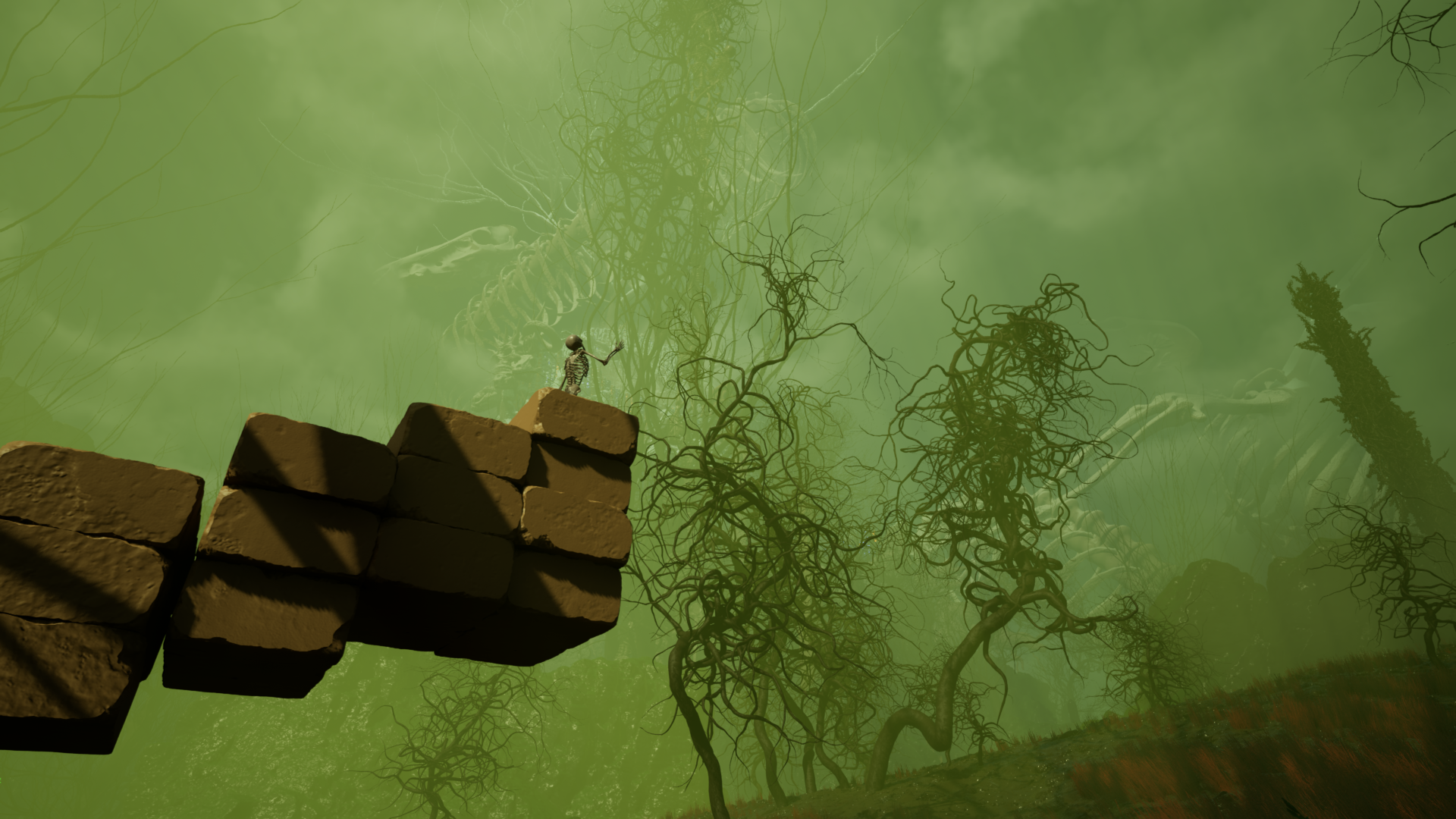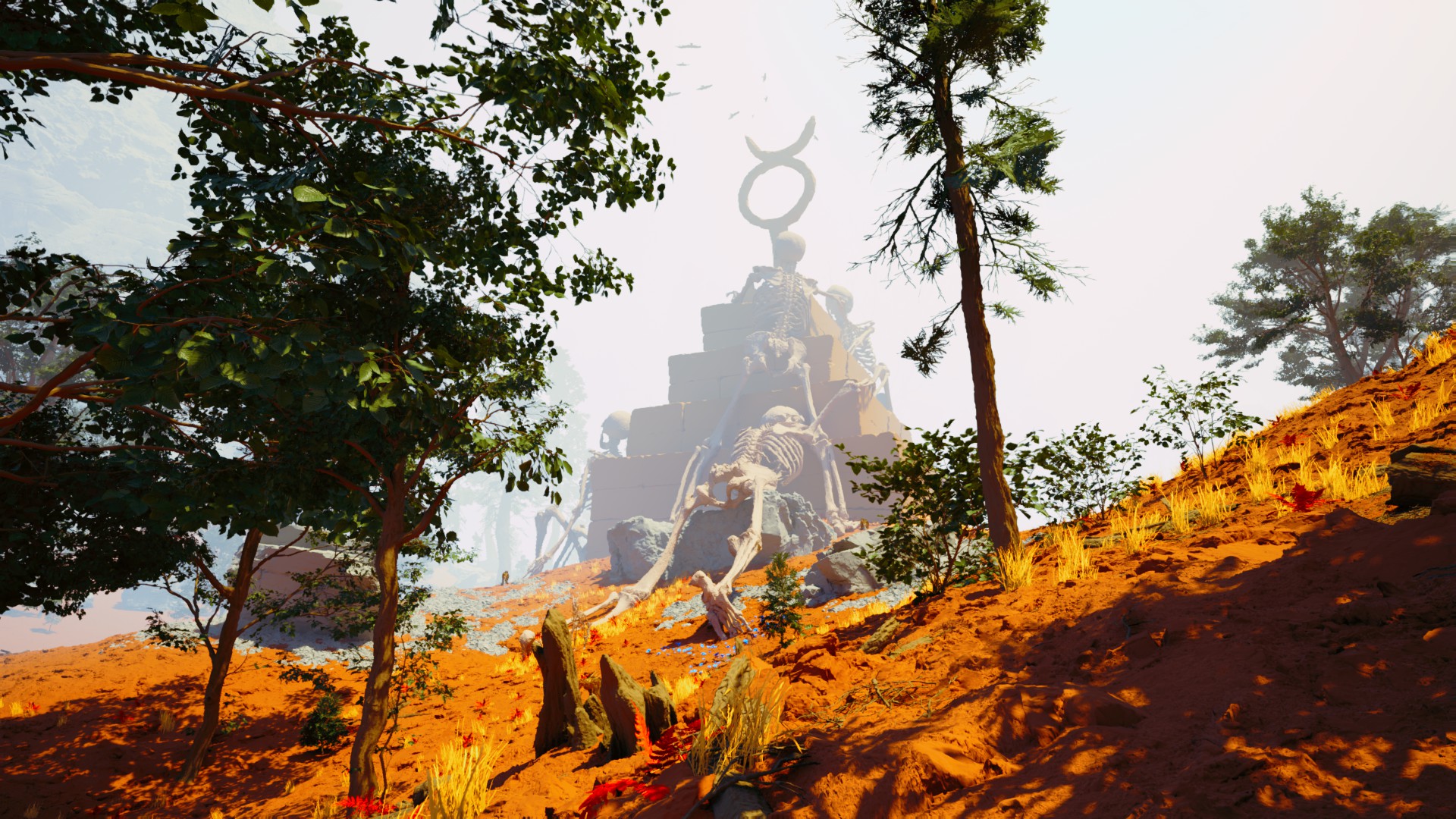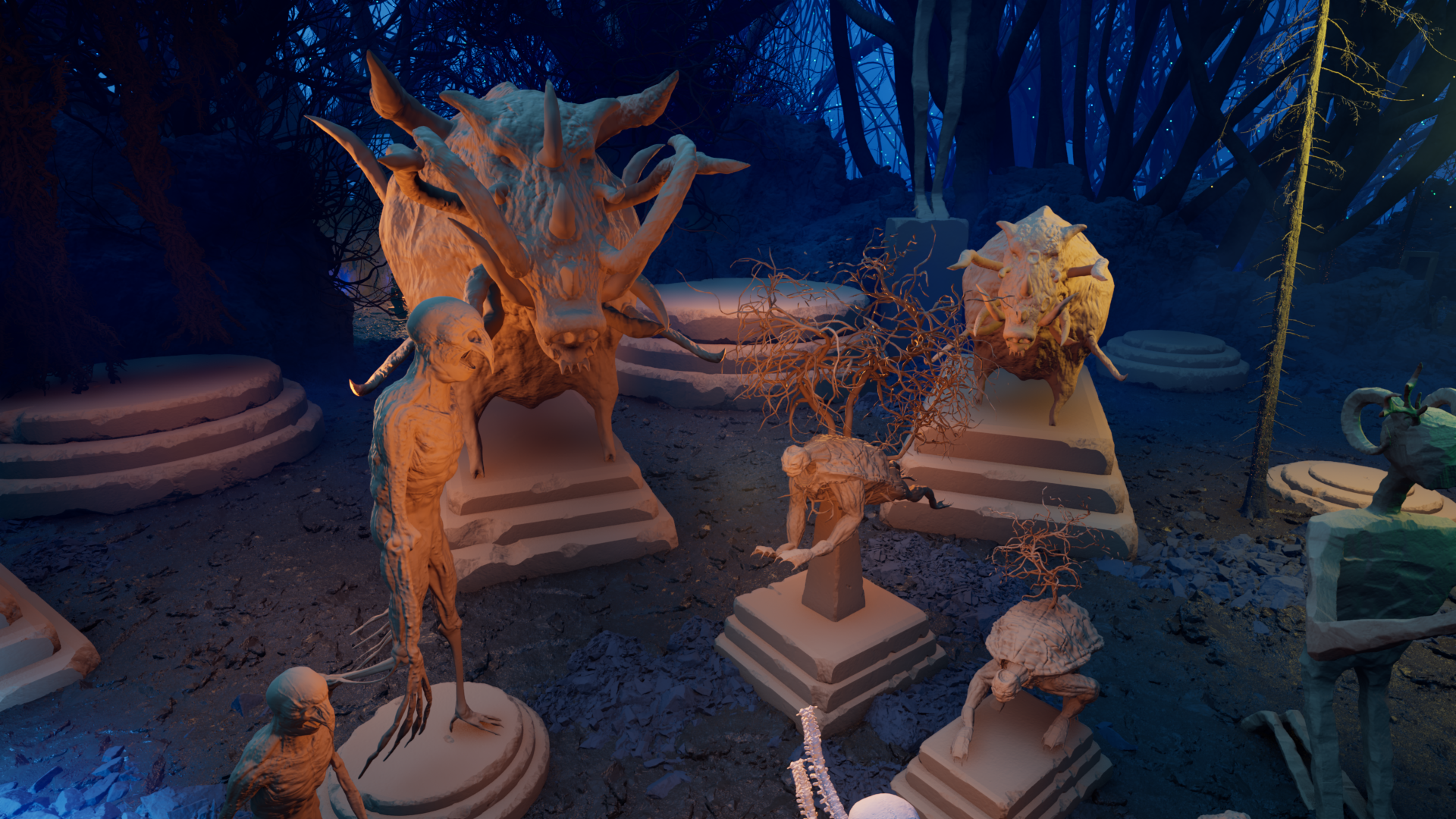The Axis Unseen is the most Skyrim-like game I’ve played since Skyrim, except with Bethesda’s grand fantasy sensibilities stripped back and filtered through the likes of Elden Ring and Praey for the Gods. With a distinctive heavy metal atmosphere, it’s singular and, I suspect, destined to be polarising.
For me, The Axis Unseen clicked quite early on. I was traversing a shallow valley, heading towards a light on the hill. I don’t know how many attempts I’d already made at the journey, constantly being torn apart by werewolves or bigfoots. I was getting frustrated. Those repeated deaths were because I was playing it counter to the way the game demands to be played—and it absolutely does demand to be played in a certain way. Despite the earlier and obvious comparison to Skyrim, you’re not the hero here, and trying to act like a typical RPG protagonist will see you stomped. The trick is to step into the role of a hunter: slow, stealthy, steady. The game tries to impress that on you from the very beginning, but I only realised the importance of it as I skirted a bigfoot, snuck up on a werewolf and put it down with an unseen headshot, and finally, finally, reached that raging bonfire, with the dark strings of the heavy metal soundtrack thudding in my ears the whole time.

When things come together like that, it’s heady. However, I found playing the game on its terms to come unnaturally to me. So what is The Axis Unseen? At heart, it’s a hunting simulator, set in a vast, vibes-heavy fantasy world. You’re a hunter, armed with only a bow, a knife, and magic that’s quite limited in its utility. In contrast, the creatures that populate this world are drawn from global folklore. They’re often large, fast, and aggressive, each one posing a stiff challenge, particularly in the early game. For example, even the relatively common bigfoot of the opening region can kill you in two hits before you get in any health upgrades — and that’s on the standard difficulty.
As with so much else in The Axis Unseen, the arsenal takes some time to get used to. The knife has only a short reach, but a single, well-placed strike can take out many of the most common enemy types; you just have to learn how to lure them in (and get the timing on your attack right). The bow is a little fiddly, particularly because your arrows are affected by gravity, which makes it easy to miscalculate distance and score an enemy in the chest instead of the head. (And the physics in general are wobbly, with hits from large enemies sending you sailing dozens of feet into the air, which is actually sometimes more of a help than a hindrance.)
Then there’s the magic, elemental but similarly slightly imprecise. I could never quite raise the earthen pillar of the first power exactly where I wanted, for example, meaning the creatures could safely ignore my attempts to block them. Others are more useful, though, whether that’s passive powers to help you see in the dark or active ones to let you teleport a short distance.

This experience is set in an enormous open-world environment; solo developer Nate Purkeypile has said that the landmass is five times as large as that of Skyrim. You can really feel that scale as you criss-cross the map, and it’s a mixed blessing. It’s not hard to understand why the landscapes sprawl so. Some of the enemies are so large that even with plodding footsteps they can keep up with your sprint. Others are so fast that you have no hope of ever outrunning them. Containing these creatures and making the place feel like it belongs to them requires the space. The curse, however, comes from the game’s absolute refusal to hold your hand.
Your journey is signposted by giant pillars of light that shine in the distance, each pointing to an altar that grants a new power. As with the giant enemies, that’s the likeness of Praey for the Gods or Shadow of the Colossus breaking through. Like the latter, unlike the former, The Axis Unseen doesn’t have a map. There is a diary with a ‘Locations’ section, but I never unlocked a single entry in that tab in all my hours of playing. It’s entirely fitting with the game’s diegetic UI, where your health, mana, arrow count, and active powers are displayed via tattoos on your hand or runes on your bow. However, I’m still not sure if the lack of location information is a glitch or an intentional design decision.
Either way, the result is that you have to try to navigate solely by landmarks. These are usually easy to spot, and you can further orient yourself by shooting spirit arrows that allow you to briefly look through them to get the lay of the land. Unfortunately, that doesn’t help much when you’re lost in a swamp with no idea of how to proceed. After collecting one power, I spent several fruitless hours trying to find the way forward, even trying to navigate outside of the designated playspace for a while, before realising that progressing required backtracking to the very beginning and setting off in a different direction. It’s another example of how the game forces you to play by its rules — even when those rules are arcane and obtuse.

Balanced against the lack of direction, however, is the reward of exploration. Stepping off the path that’s laid out for you (no matter how obliquely) to check out other landmarks and points of interest is generally to your benefit. Look up to spot circling birds, and they’ll lead to hordes of energy or diary fragments left behind by previous travellers. Glowing lights will lead to obsidian skeletons where you can increase the number of arrows or healing crosses you carry. Obelisks might grant you a bigger quiver or a new type of arrow. It’s a fairly typical process of giving you more tools to make the experience easier by degrees, and the absence of a map stands it in good stead. It embodies you in the experience, encouraging you to pay attention and be aware of your surroundings. That approach will be familiar to fans of The Legend of Zelda: Tears of the Kingdom or, even more so, Elden Ring.
And the core loop of The Axis Unseen draws from Souls-likes in a big way. Creatures drop energy on death, which you can then pick up to spend in a hub to increase all the usual stats like health, sprint speed, and magic. Die before you can return to the hub (via portals dotted fairly liberally across the land) and the energy you’ve collected on that run is lost, although you can regather it by returning to the point of your last death, indicated by a pillar of blue light. The hub also allows you to move between any portal you’ve unlocked, read the diary entries you’ve gathered without fear of molestation, and look at statues of each creature type you’ve killed thus far. Most importantly, though, it’s a chance to breathe and take stock of the experience.
I have to admit, it made me slightly uncomfortable. The statuary captures the grandeur of these creatures and imbues them with a kind of reverence. And it feels like a graveyard, a testament to your slaughter. There’s something unsettling about that. In the overworld, your violence is synonymous with survival. In the hub, it’s solemn, and you have to sit with what you’ve done — what you’ve been forced to do, perhaps, but every arrow loosed is still a choice. In the real world, some scientists contend that we’re in the midst of the sixth mass extinction event in global history, which is, at the very least, influenced by human activity. I assume you can’t hunt the cryptids of The Axis Unseen to extinction, but there’s still a “what if” that lingers at the back of my mind. What if… the statues are one day all that’s left? The game doesn’t give you the option to conserve life, but… what if?

Curiously, the heavy metal vibes that underpin the experience empower that kind of introspection. Far from the thumping drums and thrashing guitars you might expect — or be familiar with if you played the far more energetic Brutal Legend — the soundtrack is almost mournful. Harsh, yes. Deep, yes. But more often than not slow, melodic, thoughtful. I confess I’m not much of a metalhead (hip-hop is much more my speed); even so, it put me more in mind of Parkway Drive or The Amity Affliction than Metallica or Motley Crue, artists that put theme at the forefront of their music, singing about mental struggles, survival, strength… hope, and sometimes the lack thereof.
What I can say for certain about The Axis Unseen is that it will make you feel things. It might be satisfaction or sadness or frustration or anger. I ran that gamut as I played, and that’s one of the reasons I’m confident it’ll stay with me. The meat on these bones may be a little tough and gristly, but the flavour makes it worth the effort.
Verdict: Recommended
The Axis Unseen releases for PC on Oct. 22. A review code for the game was provided by the publisher. Reviewed on PC via Steam.






Published: Oct 11, 2024 11:00 am